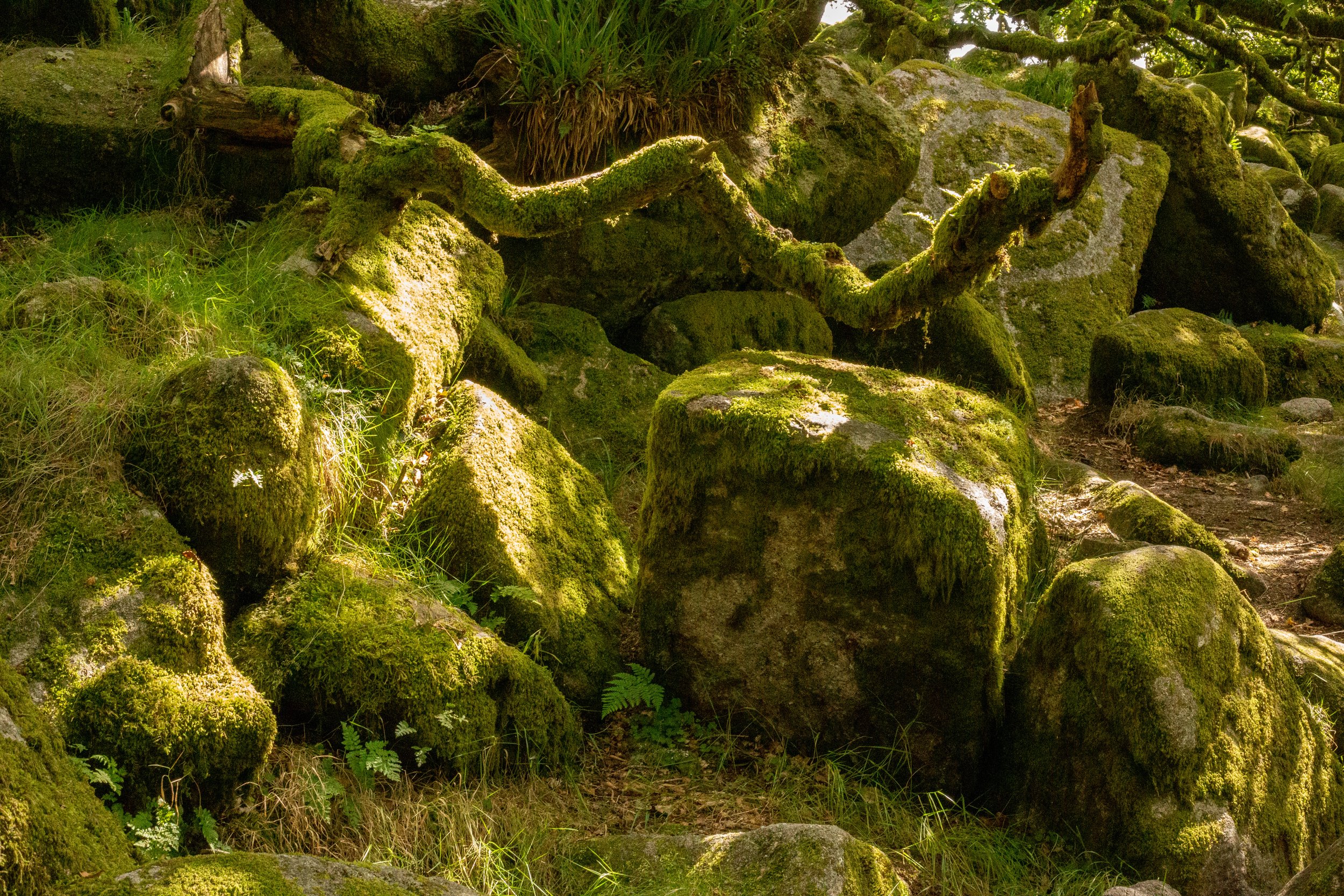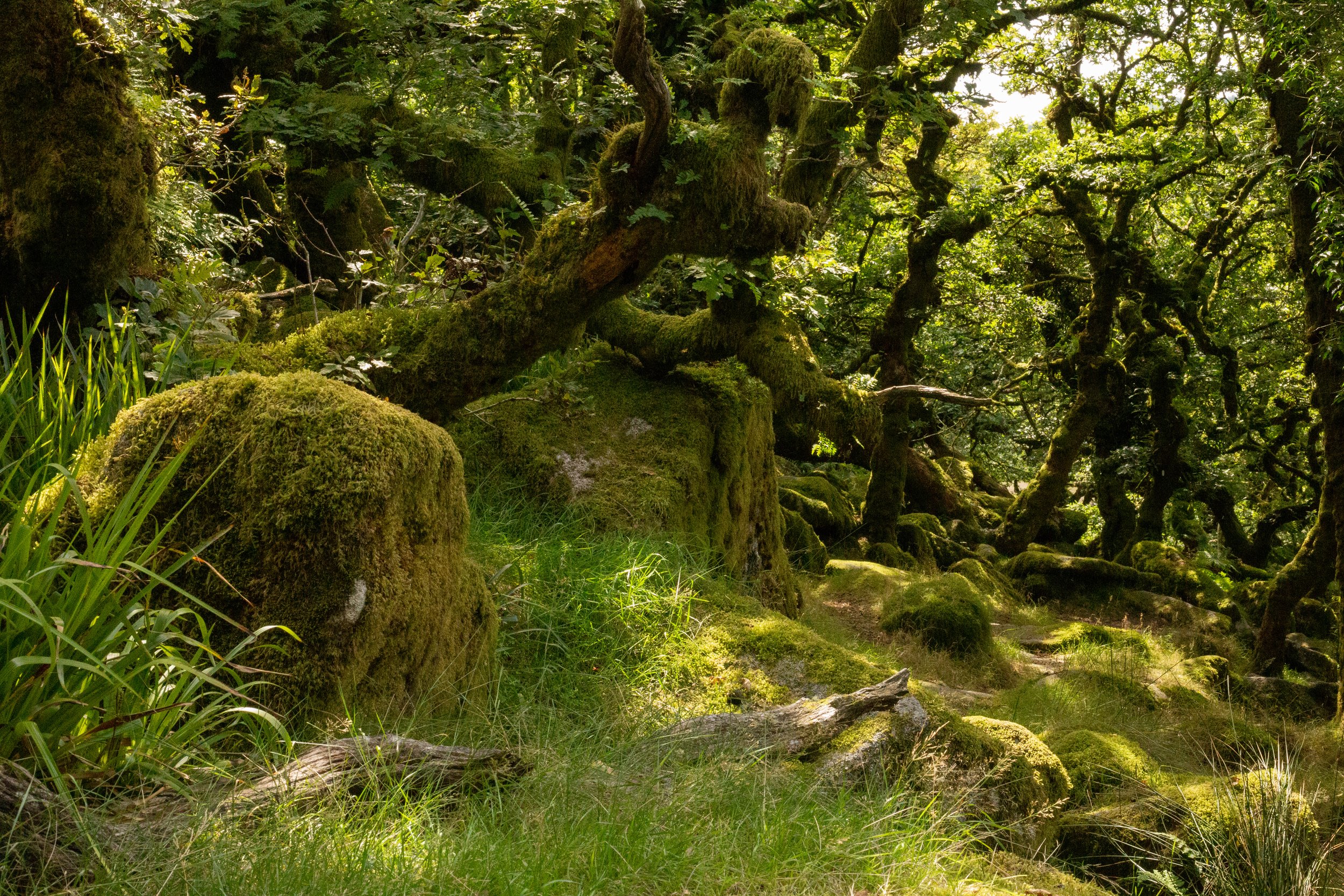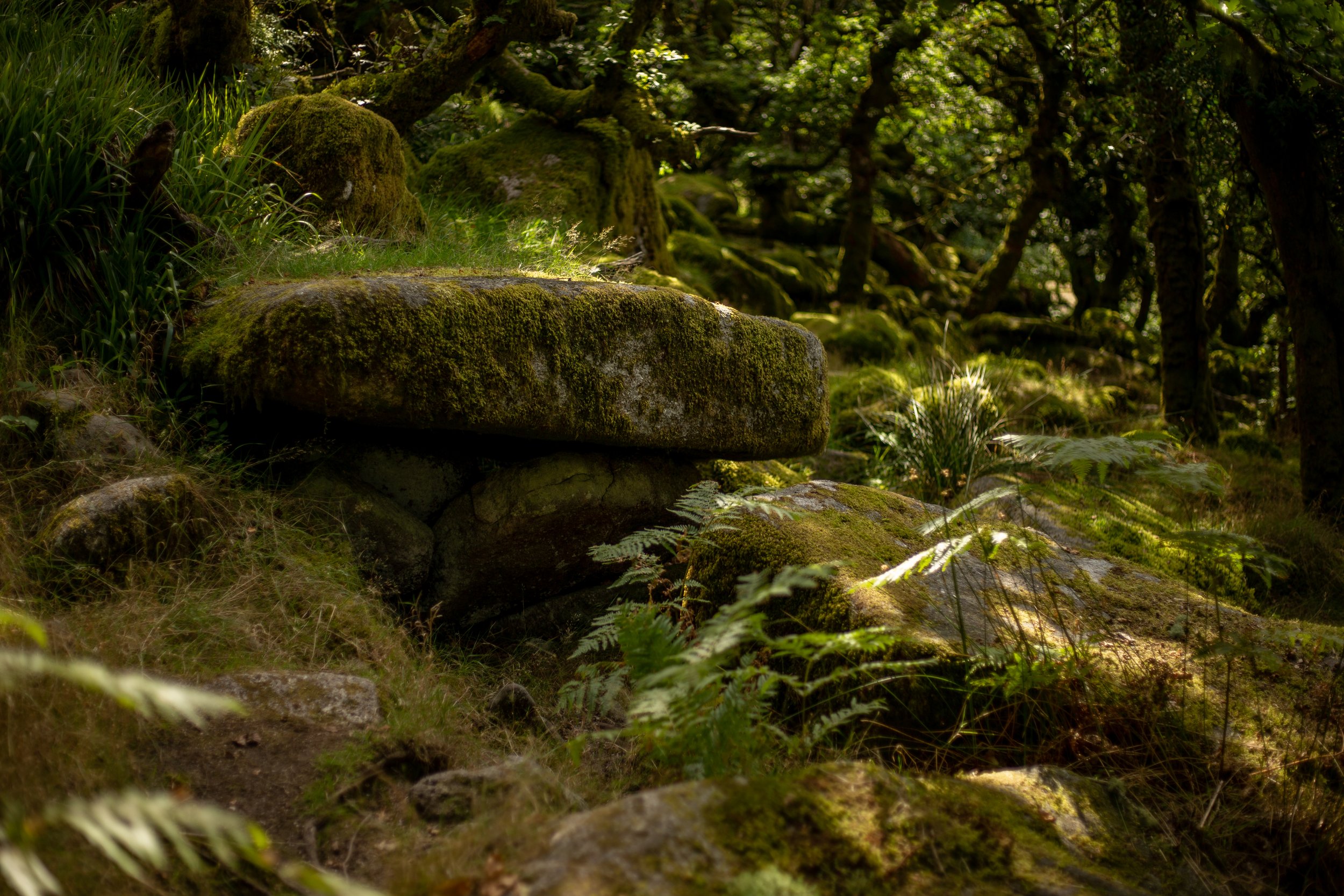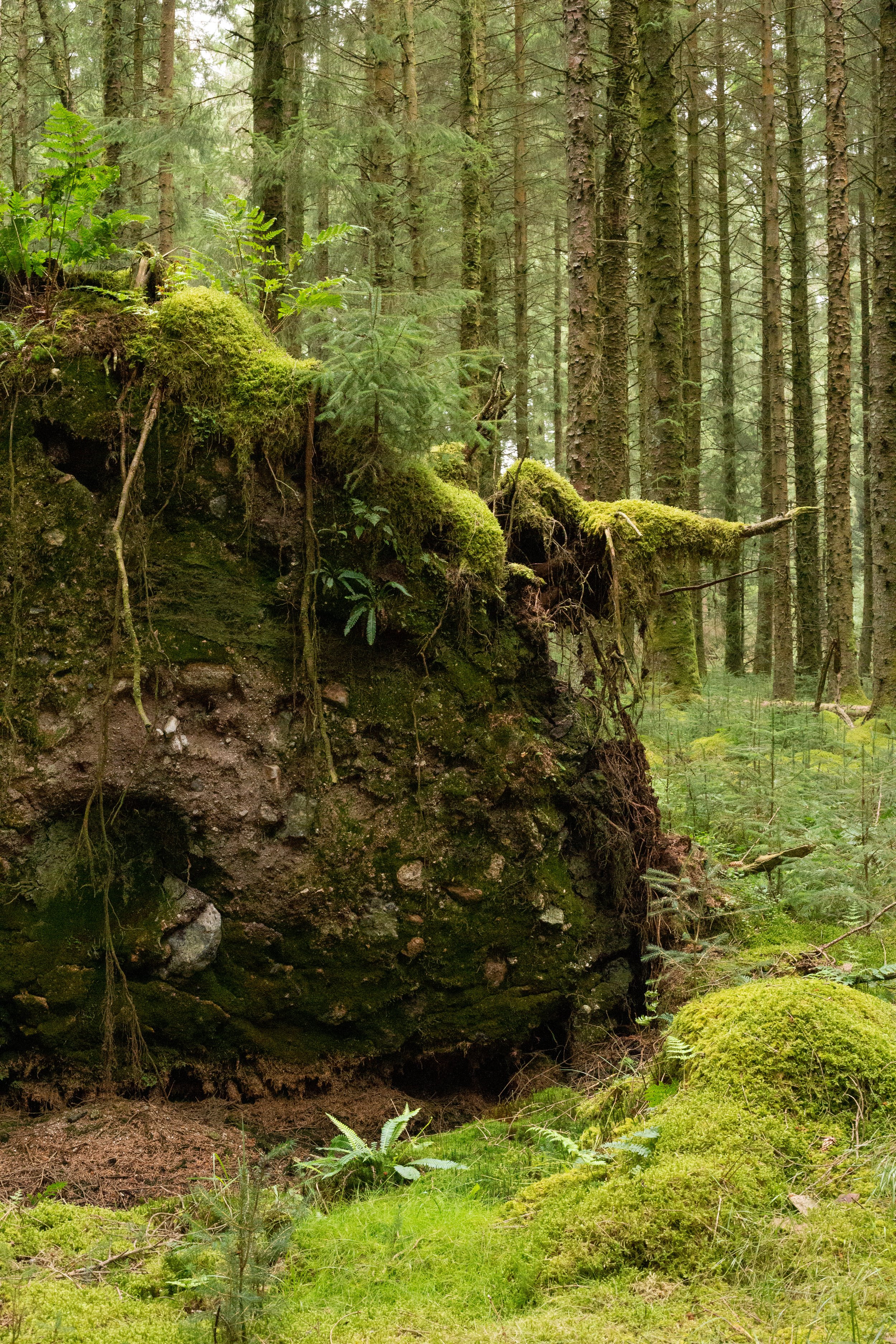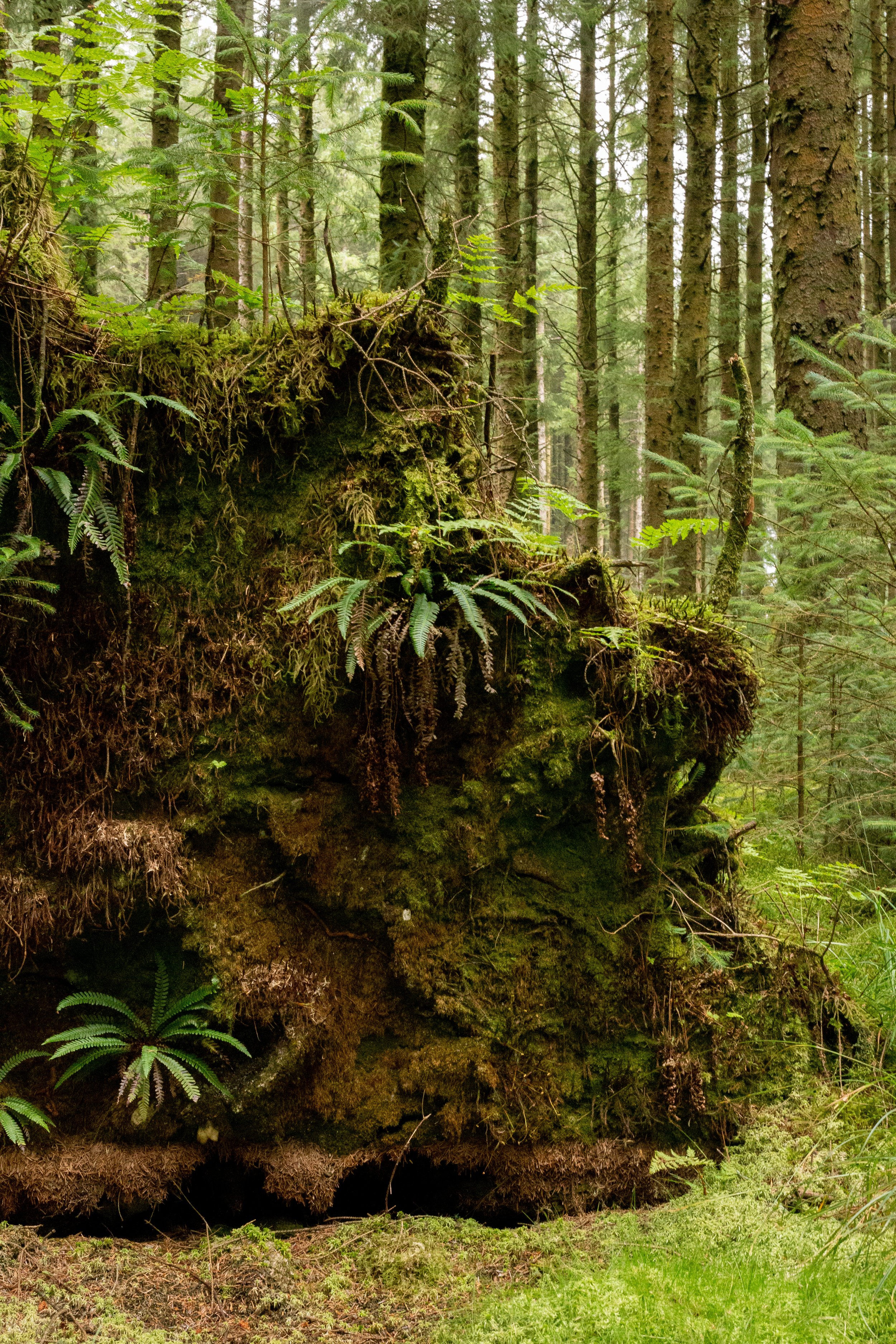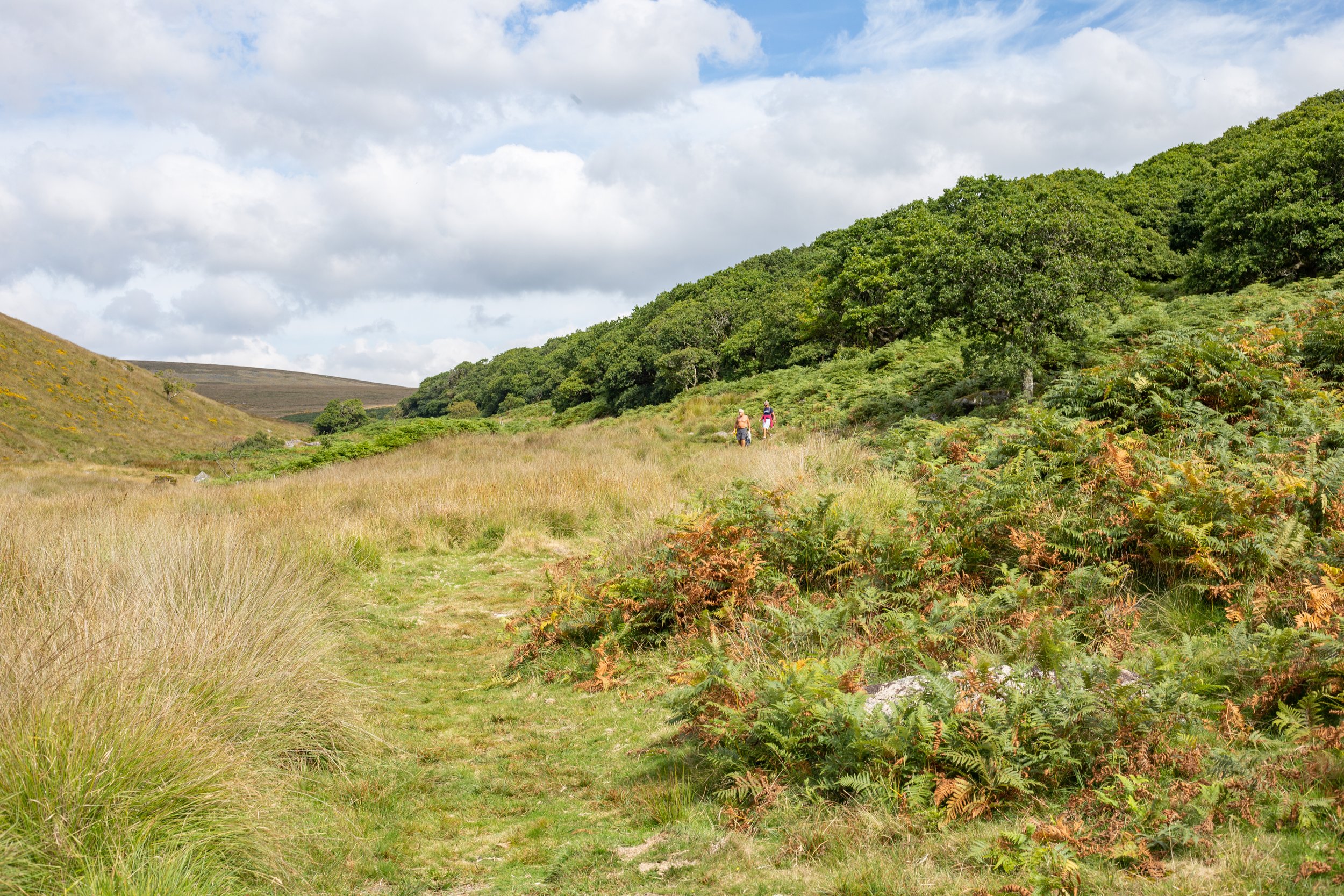It was thought for a long time that the furthest south the ice reached in Britain during the Last Glacial Period was somewhere north of York. But geologists have recently discovered that the south-western peninsula was also crushed by a massive icecap - on the granite upland today known as Dartmoor. So subtle was the evidence, mostly in the form of weathered drumlins and moraines, it had been overlooked.
Soon after the disappearance of the ice, the area was settled once more by a riot of moisture-loving trees. Atop land once oppressed by an undifferentiated mass up to 100 metres thick, a rainforest emerged - and it endured for many thousands of years before succumbing to an intense wave of clearing by Mesolithic peoples. The Moor as we know it began to take shape. But fragments of the primeval rainforest, or at least something that evokes it, remain.
Thanks in no small part to the efforts of Guy Shrubsole, whose book The Lost Rainforests of Britain was published last year, awareness of the temperate (or ‘Celtic’) rainforest has recently surged. The conditions for this globally rare biome (modest annual temperature fluctuation and lots of rain and humidity- high ‘oceanicity’) still prevail on the Atlantic coasts of Britain and Ireland. But there are only scattered patches left, most of the primordial forest having been cleared and given over to pasture. Today on Dartmoor, the habitat is confined to a few lonely hillsides, where pistachio-green lichens cascade from wizened oaks like so many beards. What really distinguishes the temperate rainforest is the presence of epiphytes - plants that grow on other plants, including lichens, mosses and ferns.
The most famous is at Wistman’s Wood in the heart of the national park. It clings to the slopes above a trickling tributary of the River Dart, and, except for the odd ash and holy, is basically a community of Common Oaks (Quercus robur), the quintessential English tree. In the normal course of things, this species can achieve heights of one hundred feet or more; but here, the tallest individuals rarely surpass fifteen. The Wood is what anthropologist Eduardo Kohn calls a ‘dense thicket of life.’ Every tree is bedecked with other plants, and the boulders strewn amongst them are covered in luminous emerald mosses. The presence of this ‘clitter’ (or collection of stones) has often been cited as the reason for the Wood’s endurance against the odds, preventing grazing.
Scrambling off the Moor and into the dappled gloom felt truly like passing through some kind of portal. I was enthralled by the place, its inexpressible sense of mystery and antiquity. The stillness. Like so many others, I had the feeling that the Wood was enchanted, imbued with an unknown significance. For as long as I stayed, the whole world felt - in a way never possible in cities - steeped in symbolism.
Looking back, it’s clear to me that this feeling was engendered, at least in part, by the visual language of fairytales. Early exposure to Brothers Grimm tropes, through bedtime books and Disney animations, cultivated deeply-rooted associations. And yet it’s also possible that these very motifs - gloomy oak-woods, intertwining branches, speckled fungi - reflect or express something buried in our psyches. A longing, perhaps, for a prelapsarian state, a return to the Wildwood.
Losing myself in ambient music, I sat on a boulder and reflected, trying to figure out how and why the Wood was affecting me. In this place, no particular effort was needed to be present. I stopped caring about the time, and allowed myself to experience the flow of things. At a certain moment, however, I also became aware of a certain desire to know things. Part of me wanted, essentially, scientific information about the Wood, to know something of its natural history, its ecological entanglements. Despite myself, I couldn’t be satisfied with naive observation and attunement. There was no urge to start Googling there and then, and it probably wouldn’t have been possible anyway, but I made a mental note to find out more once I’d returned to normal life.
For Max Weber, it was precisely the pervasiveness of this assumption that indicated a disenchanted world: the internalised expectation that, if we wish to find something out, we can in principle do so. We know that there will be an explanation ready to hand, written in a register by which the denizens of the forest figure as biota or symbionts. This ‘epistemic confidence’ can be considered one aspect of a worldview by which the Earth is ‘revealed’ to us as standing reserve. Such an attitude is starkly dramatised five miles down the road at the Bellever forest, the antithesis of the hold-out copse, which serves as a useful reminder that the great majority of trees on Dartmoor are grown for profit.
There are four large conifer plantations on the Moor of mostly Sitka spruce (Picea sitchensis), a species native to the Pacific north-west that can reach heights of almost 100 metres. After the last great thaw, it was one of the first trees to establish itself in the glacial moraines and foggy fjords of Alaska and British Columbia. But now here it finds itself in densely regimented stands on a remote peninsular highland, a continent and an ocean away.
The plantations were mostly laid down in the aftermath of the First World War, during which swathes of British forests were felled to line the trenches of the Western Front. Amidst fears of a global timber famine, the Liberal government set up a committee to assess the role of afforestation to postwar reconstruction. Its recommendations led to the founding of the Forestry Commission in 1919, whose central task was to secure timber supplies. But it was also hoped that the new forests would help reinvigorate rural communities in upland areas. For this reason, most of the moorland identified as suitable for planting was close to manufacturing centres and coal fields, making Dartmoor a relatively minor player in the overall scheme.
But as Matthew Kelly recounts in Quartz and Feldspar, it had a landlord keen to be seen to act in the national interest, the Duchy of Cornwall, which swiftly set about planting Brimpts and Fernworthy farms. Responsibility for the plantations was later transferred to the Forestry Commission, however, after officials found a ‘very lax…regime’ during a 1930 inspection - with forestry seemingly subservient to sport.
The Commission also had to contend with the Dartmoor Preservationist Association, which opposed the plantations on the basis that they compromised the Moor’s desolate beauty by blunting the profile of hills and, in the case of Bellever, on account of various antiquities - cairns, hut circles and evidence of an early field system. In the end, the development went ahead, creating the second-largest plantation on the Moor. But not without significant concessions to the preservationists: the antiquities were left uncovered and access to Bellever tor preserved.
It still provides a good vantage point from which to observe the landscape mosaic. Dartmoor is composed of numerous ‘patches’, a term used by landscape ecologists to signify distinct areas of habitat differing from their surroundings. The vast open moorland is interspersed with sheltered valleys and small plots of enclosed farmland, alongside the fragments of temperate rainforest and the plantations.
View from Bellever Tor over Dartmoor. It’s only when you climb up and look out over the landscape that the contrivance of the plantation really hits: sharp edges and clear-cut wastelands.
Back amongst the trees, I took a detour off-track to examine a fallen spruce, resting atop a mattress of moss. It had clearly been there for quite a while: the haphazard roots, ripped from their sheltered dwelling, had acquired a green tinge, and there was no sign of a cavity at the base. Spruce tend to have quite shallow root systems, making them vulnerable to high winds. And wandering around the immediate area, I came across many other casualties, each at differing stages of integration with the forest floor. Prematurely felled by forces of nature. I remember being struck by the insouciance by which the corpses slowly decayed into humus and returned to the soil from which they came. The casualties do not jeopardise the overall viability of the plantation, and so, seemingly, are just left to be reclaimed.
While wandering around, I became fascinated by the variations in tone and texture of the bases: the fresh, vivid soil of the newly fallen, through to the dry, green-tinted faces of the partially reclaimed. The longer the repose, the more epiphytic ornamentation: bright garnishes of ferns and mosses - even the odd spruce sapling, daringly trying to establish itself on a precipice. This speaks to one of plantations’ strangest qualities: they are organised around the extreme manipulation of nature, but simultaneously teem with an abundance of life. No more so than in managed forests, where, at least relative to other plantation types, there’s a sense of disorder. After all, the product is timber. It doesn’t have to be coaxed into expressing pleasing tastes.
But it’s not possible to trick yourself here, to forget that this is a commercial forest managed according to a masterplan, its vitals constantly monitored - ‘a machine of replication’, in the words of Anna Tsing. The plantation was compelling in its own way, but couldn’t come close to inducing the same feelings of peace and transcendence I’d experienced the previous morning at Wistman’s Wood.
And yet, as I cycled back to Exeter later that afternoon to catch the London train, it struck me that without the late-summer serenity of the day, the last of August, which bestowed on the place a dappled perfection, my response to the Wood would surely have been different. I later caught a glimpse of its dark side in John Fowles’ poetic description of a solitary winter expedition there in 1946. It appeared to him a bad place, not somewhere to linger: ‘forlorn, skeletal, almost malevolent’. With such an image in mind, it makes more sense, perhaps, that our ancestors felt moved to strip the hills so thoroughly, with fire and axe, of their vegetation.
The boundary between open moorland and Wistman’s Wood.

